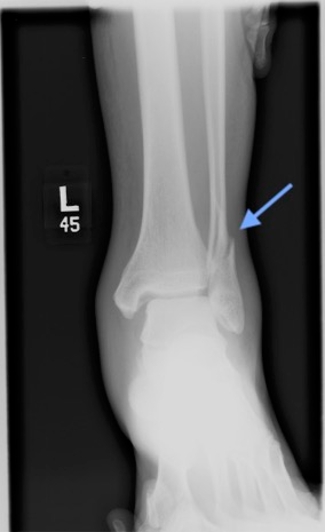Ankle Case 10 ED Management
Weber B Fracture

ED Management
When obvious deformity, skin tenting, or neurovascular compromise is present, urgent reduction should be attempted at bedside even prior to obtaining imaging or after a rapidly obtained bedside radiograph. This typically requires parenteral analgesia and possibly sedation. All obvious deformities should be reduced or attempted to be reduced in the ED prior to splinting to achieve as close to anatomic alignment as possible.
Stable fractures (without medial malleolus or deltoid ligament instability) tend to be managed nonoperatively. These can be placed in a posterior mold splint, made non-weight bearing, and referred for rapid outpatient orthopedic follow up.
Unstable fractures (i.e. Weber B with medial malleolus fracture or deltoid ligament instability) require operative management with ORIF. These surgeries seldom occur at the initial ED presentation. If the patient is reliable and rapid orthopedic follow-up can be obtained, these patients can be discharged with non-weight bearing status in a posterior mold splint. Any stress view x rays can be deferred to the follow-up visit. If rapid orthopedic follow-up is not feasible, then ED orthopedics consultation is warranted, and stress view x rays may be requested by the consultant.